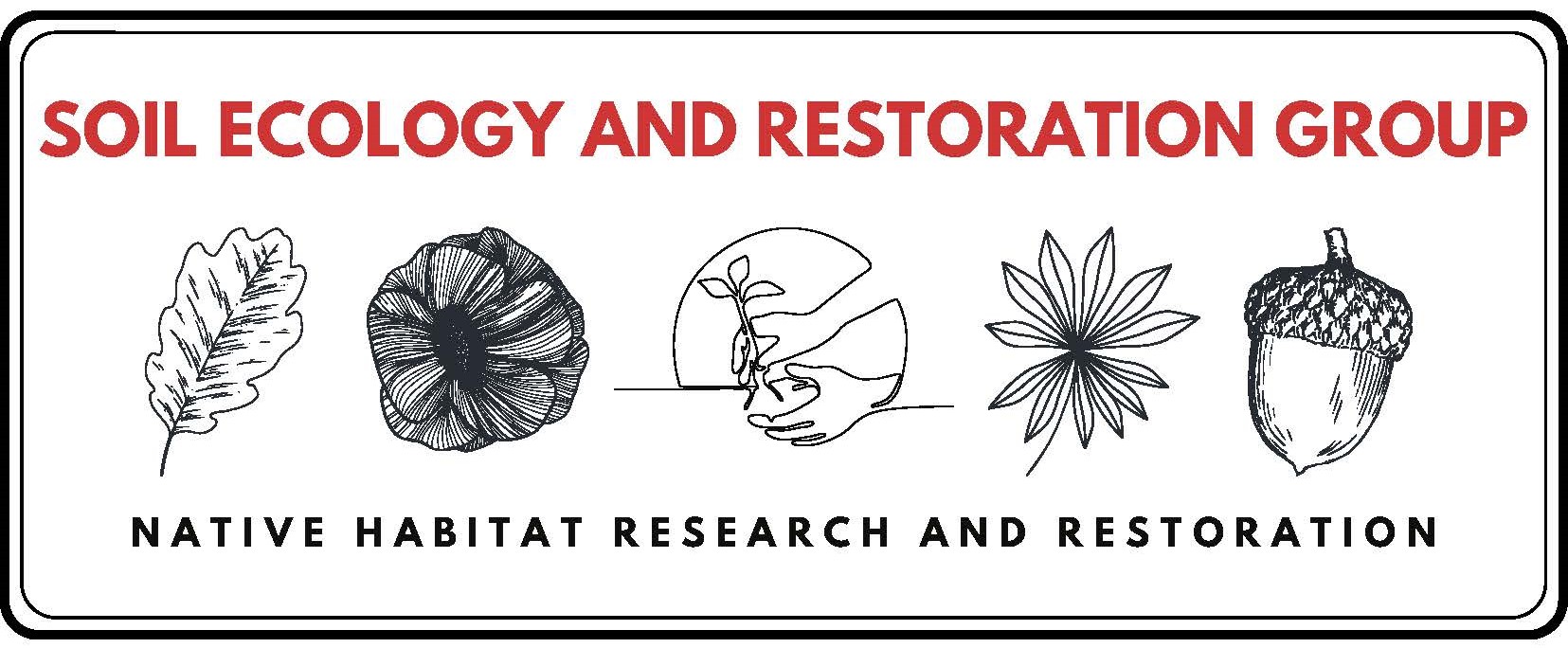On September 28th, 2016, the Soil Ecology and Restoration Group (SERG) was awarded a grant agreement (SDRG-P1-15-01) from the San Diego River Conservancy Proposition 1 Program for the restoration of Alvarado Creek Upper Reach 1 (Project) located on San Diego State University property. The project goals were to:
1) Restore native riparian habitat,
2) Quantify the hydrologic changes resulting from stream habitat restoration,
3) Quantify the effectiveness of stream habitat restoration in reducing flooding potential,
4) Quantify the effectiveness of stream habitat restoration in reducing water pollution,
5) Quantify the effectiveness of stream habitat restoration on biological integrity, and
6) Quantify the response of biological and chemical indicators of water quality to stream habitat restoration.
Approximately 180 tons of non-native biomass, mainly composed of palm trees and giant reed, were removed from the project area. The removal of non-native species allowed native species to triple their cover from 23.6% pre-restoration to 66.9% two years after restoration. The removal of the non-native species also changed the structure of the vegetation from canopy-dominated to understory-dominated with the canopy absolute cover decreasing from approximately 50% to approximately 25%.
Overall the CRAM score was lower in the project area both pre- and post-restoration than in the reference site. Buffer and Landscape, and Physical Structure scores were unchanged before and after restoration, which is expected as the stream is confined by development from the SDSU campus and transportation infrastructure. Phase I appeared to have an increased hydrology score due to an increase in channel stability from pre- to post-restoration. Phase III remained constant pre- to one year post-restoration but declined due to hydrologic connectivity in the second post-restoration year. The physical structure in Phase I increased after the restoration as the topographic complexity is noted to increase, while in Phase III, the score remained constant for the entire study period. The biotic structure increased the first year after restoration for both Phases of the project, however, there was a decrease from the first post-restoration year to the second year.
There was a shift in the grain size distribution after restoration, where the cumulative distribution had more variation and larger grain sizes. This is likely due to the removal of vegetation and increased capacity for streamflow and transport capacity. During the study period, storm totals, durations, and intensities varied greatly, making it difficult to quantify the streamflow response without a longer historical record. However, flooding occurrences were observed to decrease following the restoration efforts.
Fecal indicator bacteria (FIB) concentrations during baseflow were highly variable in Alvarado Creek at the Upper Reach 1 and Grantville sites during three spatial campaigns conducted before and after restoration activities. Long-term monthly and bimonthly monitoring of FIB concentrations revealed that wet season Escherichia coli concentrations were generally higher than concentrations in baseflow (non-storm) samples collected during the dry season, presumably due to the greater mobilization of contaminants during wet weather. Nitrate concentrations were also elevated during the wet seasons compared to the dry season. However, higher phosphate concentrations during dry season baseflow decreased the N:P molar ratio and lead to conditions that are conducive for algal blooms. Concentrations, chemical characteristics, and optical properties (absorbance and fluorescence) of dissolved organic matter (DOM) suggest that dry season inputs are dominated by groundwater recharge of the creek, whereas wet season inputs are characterized by more aromatic and humic DOM flushed from the soils and watershed.
FIB concentrations during storm events increased from 102 MPN/100 mL to > 105 MPN/100 mL and stayed elevated long after the end of the storm and after peak discharge. Enterococci concentrations were several orders of magnitude higher in the 2017 (post-restoration) storm event than in a 2016 storm event of similar magnitude, whereas E. coli concentrations were unchanged. These results may reflect a different source of enterococci than E. coli and a potential disturbance from restoration activities. Chloride concentrations and Cl/Br mass ratios measured during storm events both decrease during the onset of the storm, indicating surface runoff, and return to higher values that are representative of saline groundwater during and after peak discharge. These shifts in the Cl/Br mass ratio suggest that initial surface runoff is responsible for the early bacterial loads to Alvarado Creek and that the flux of FIB into Alvarado Creek during and after peak discharge is more influenced by subsurface sources.
